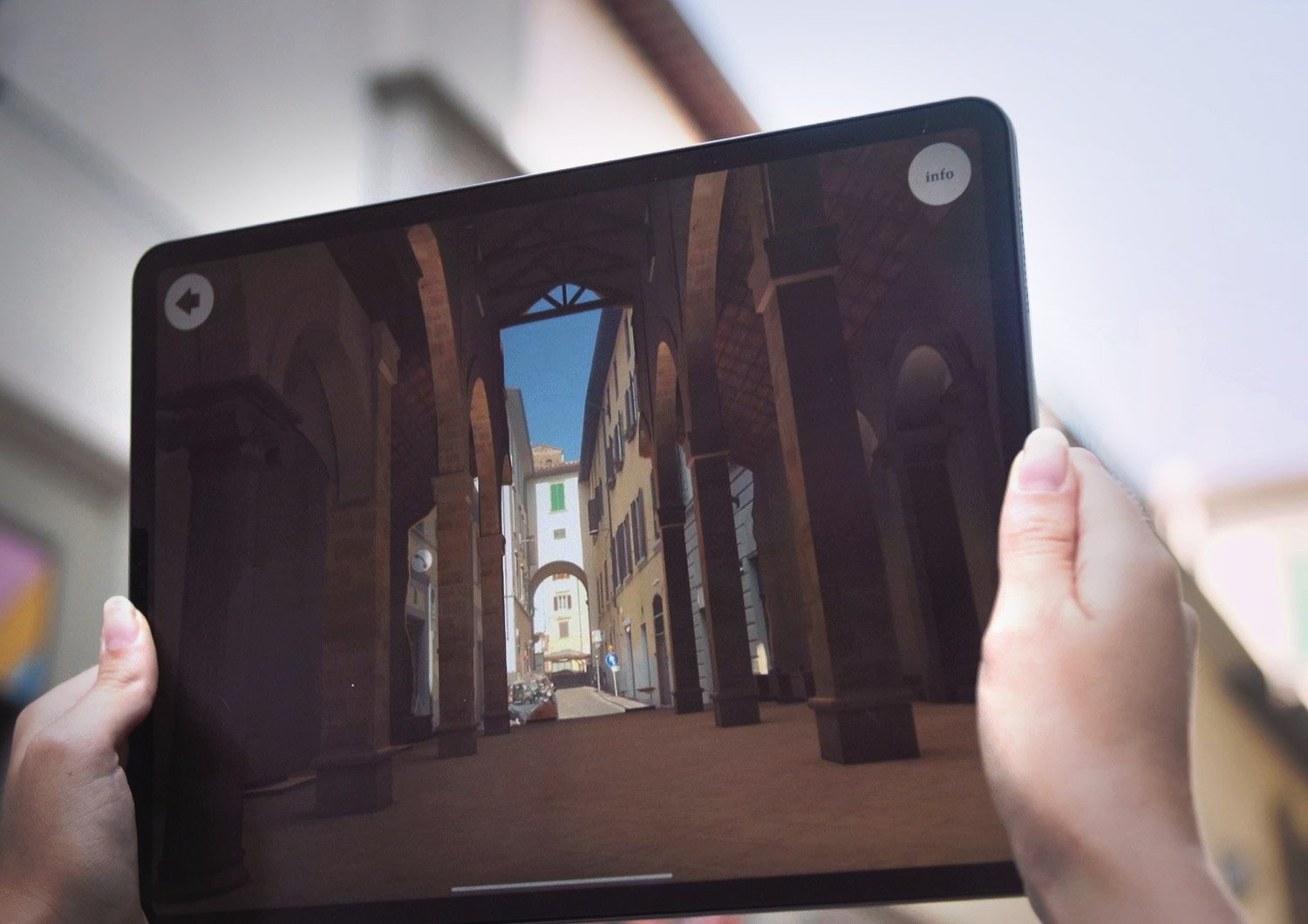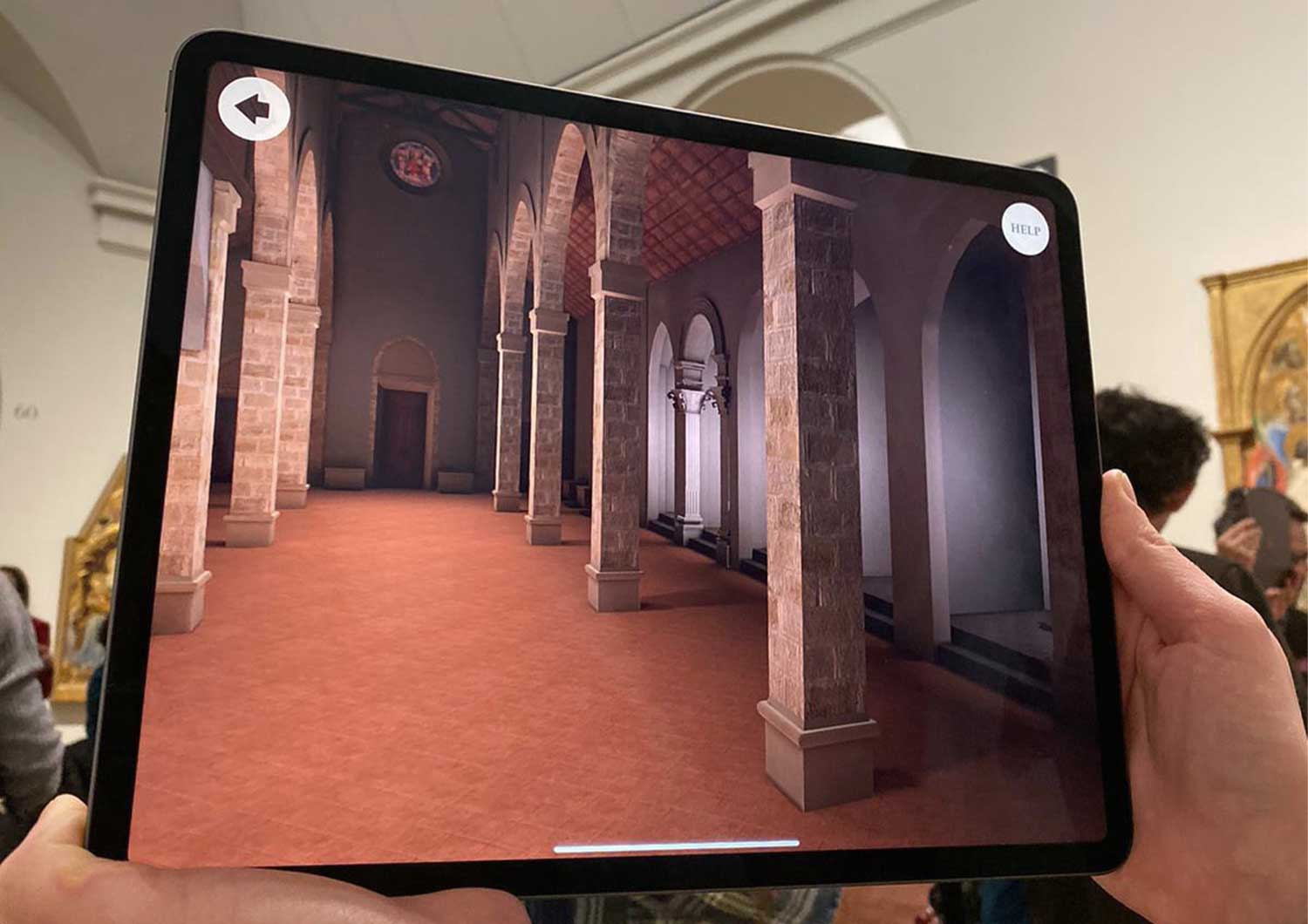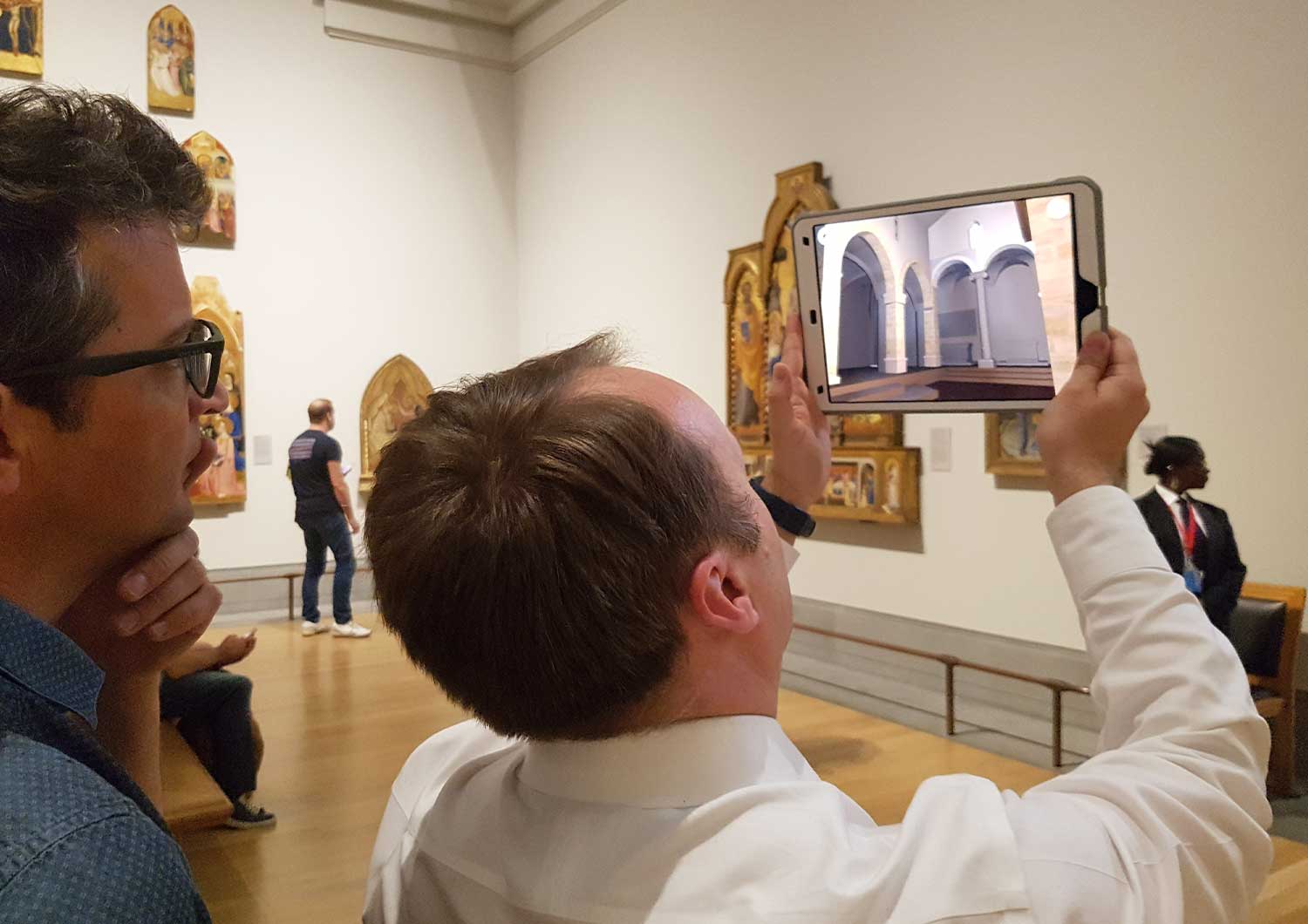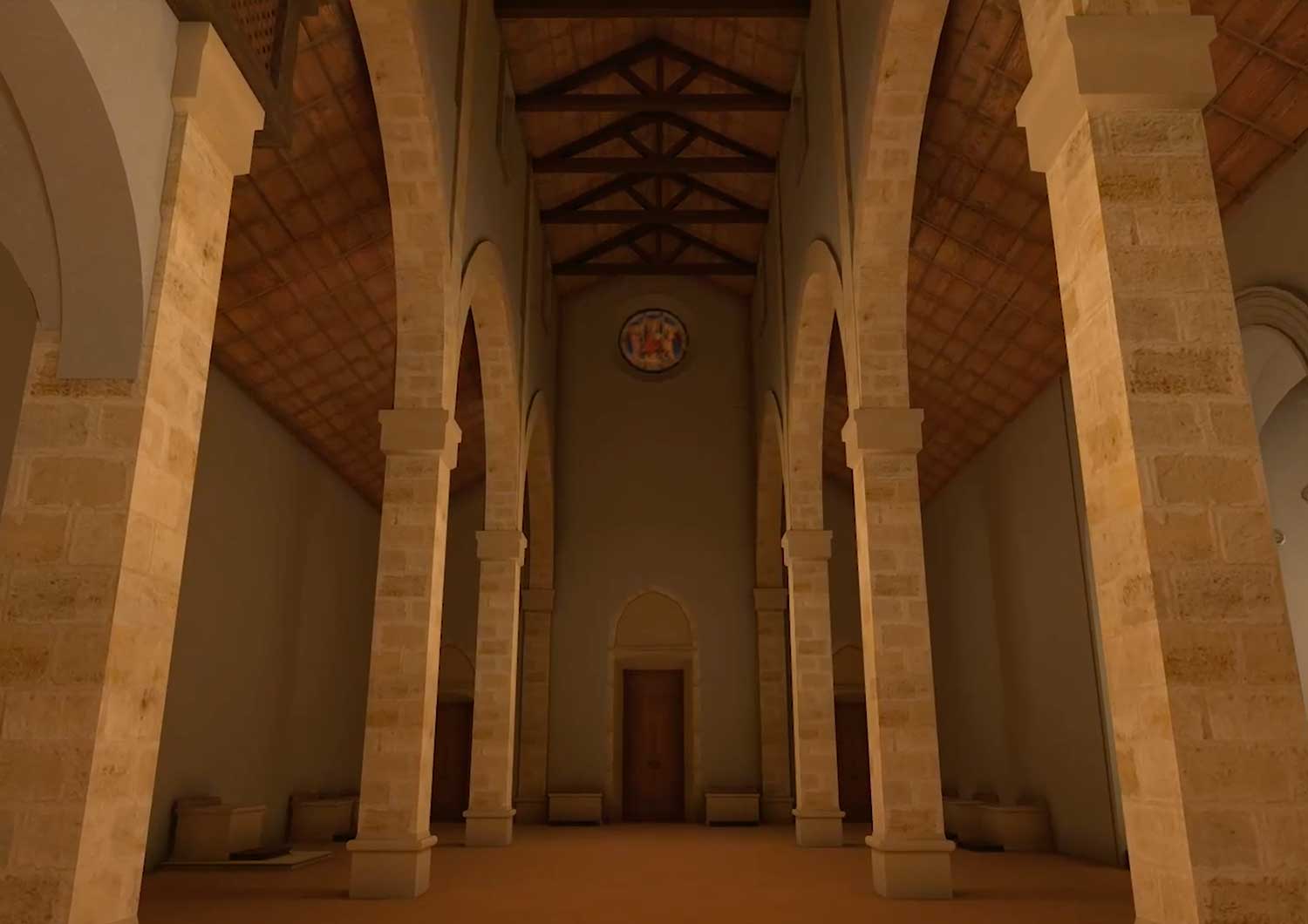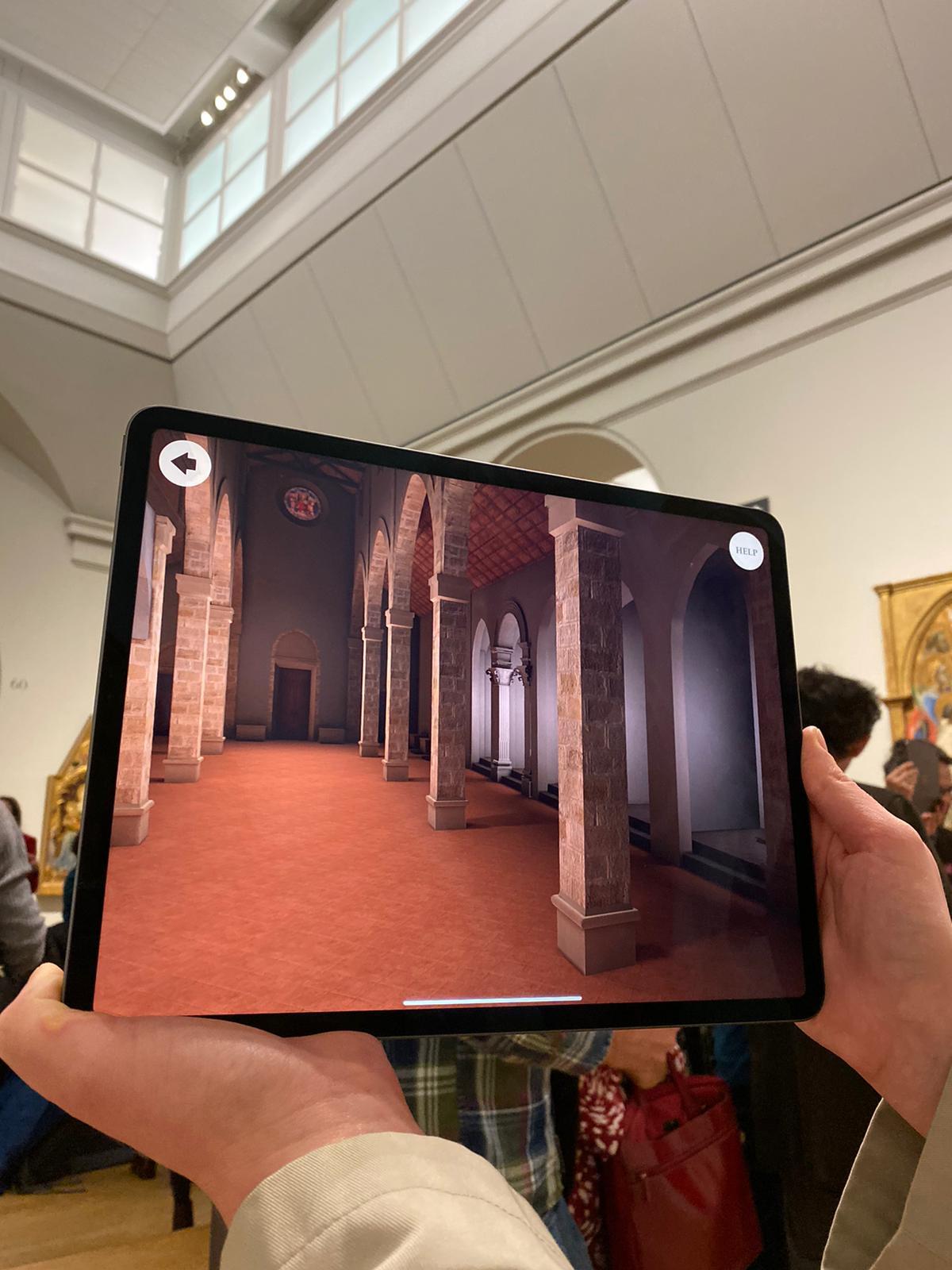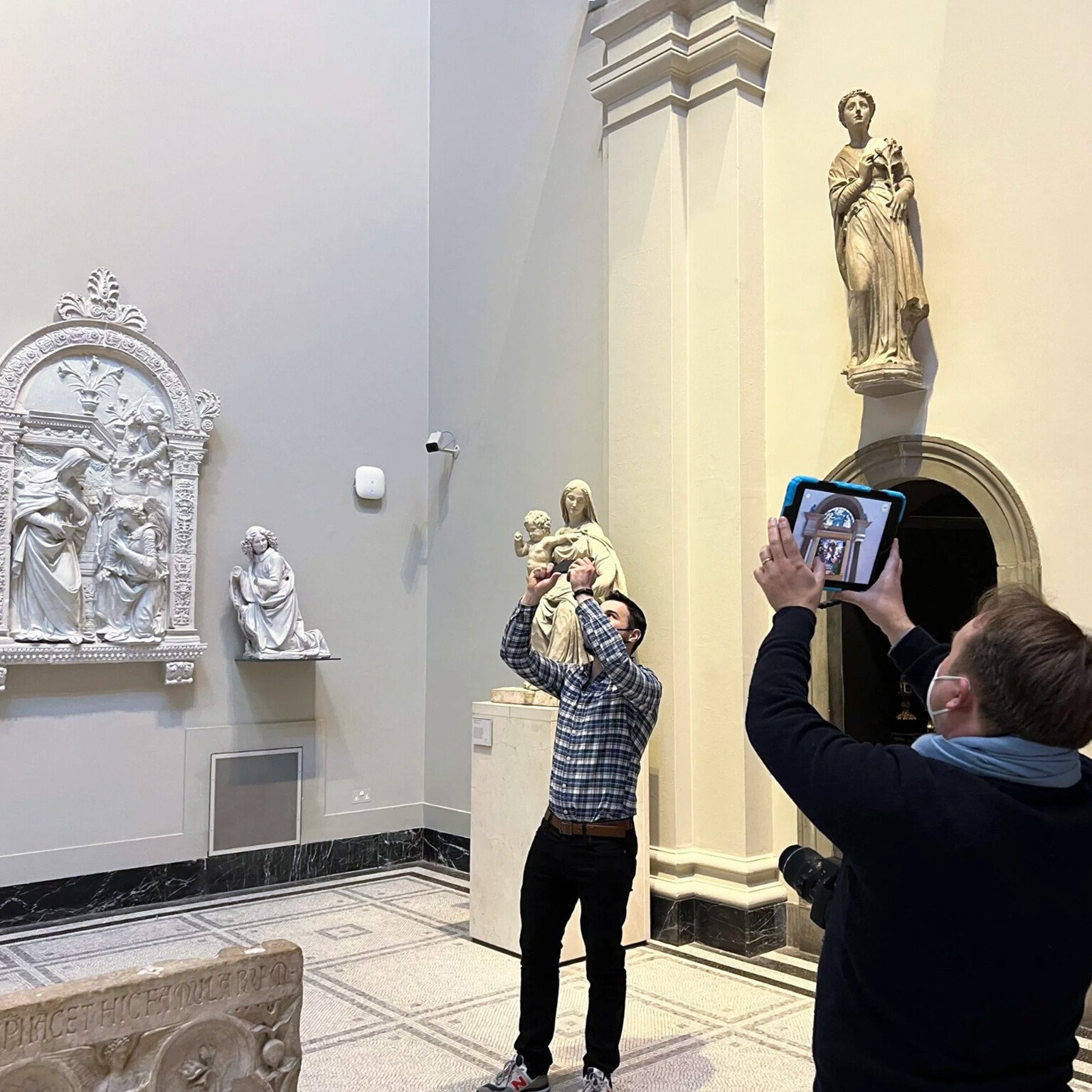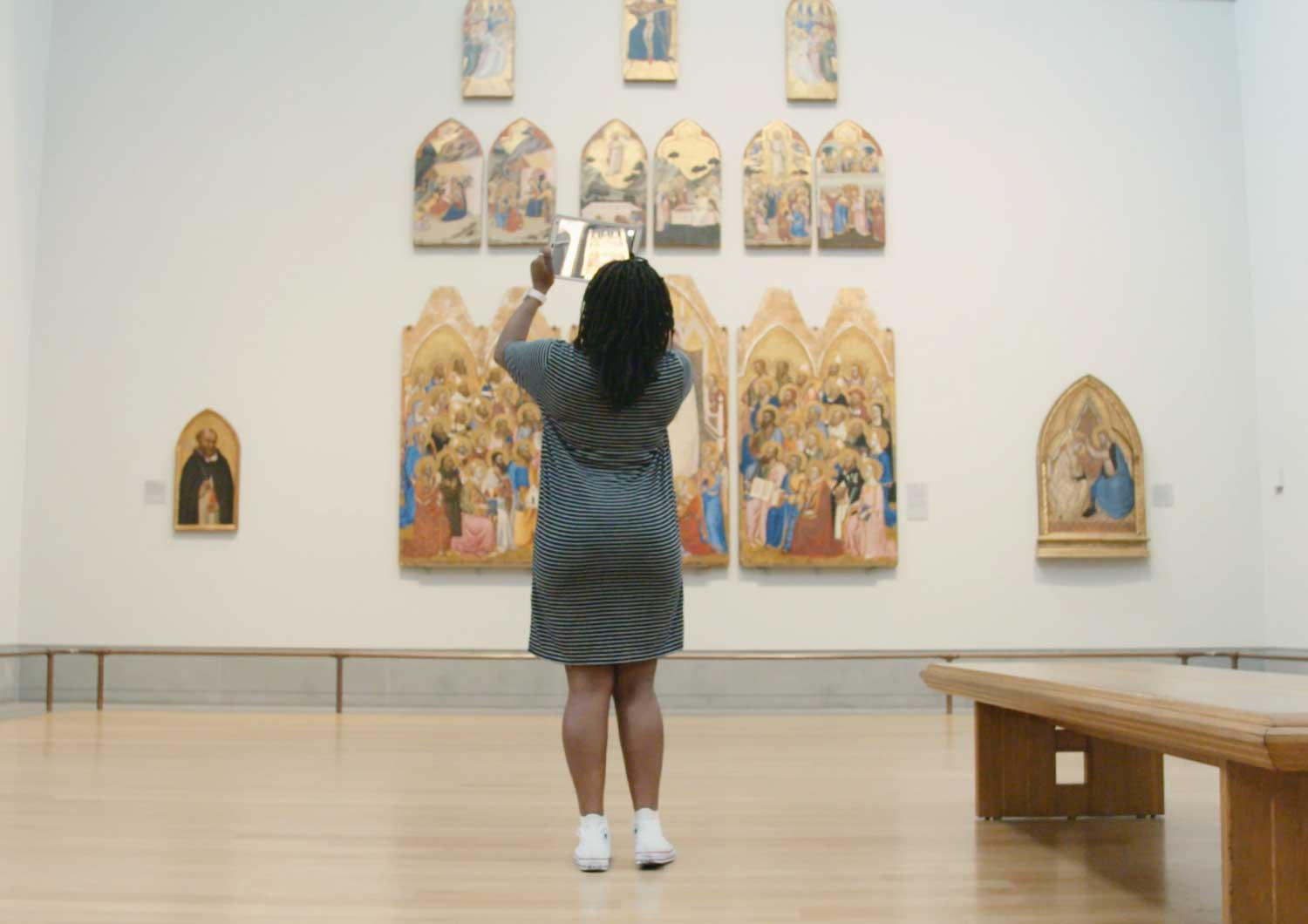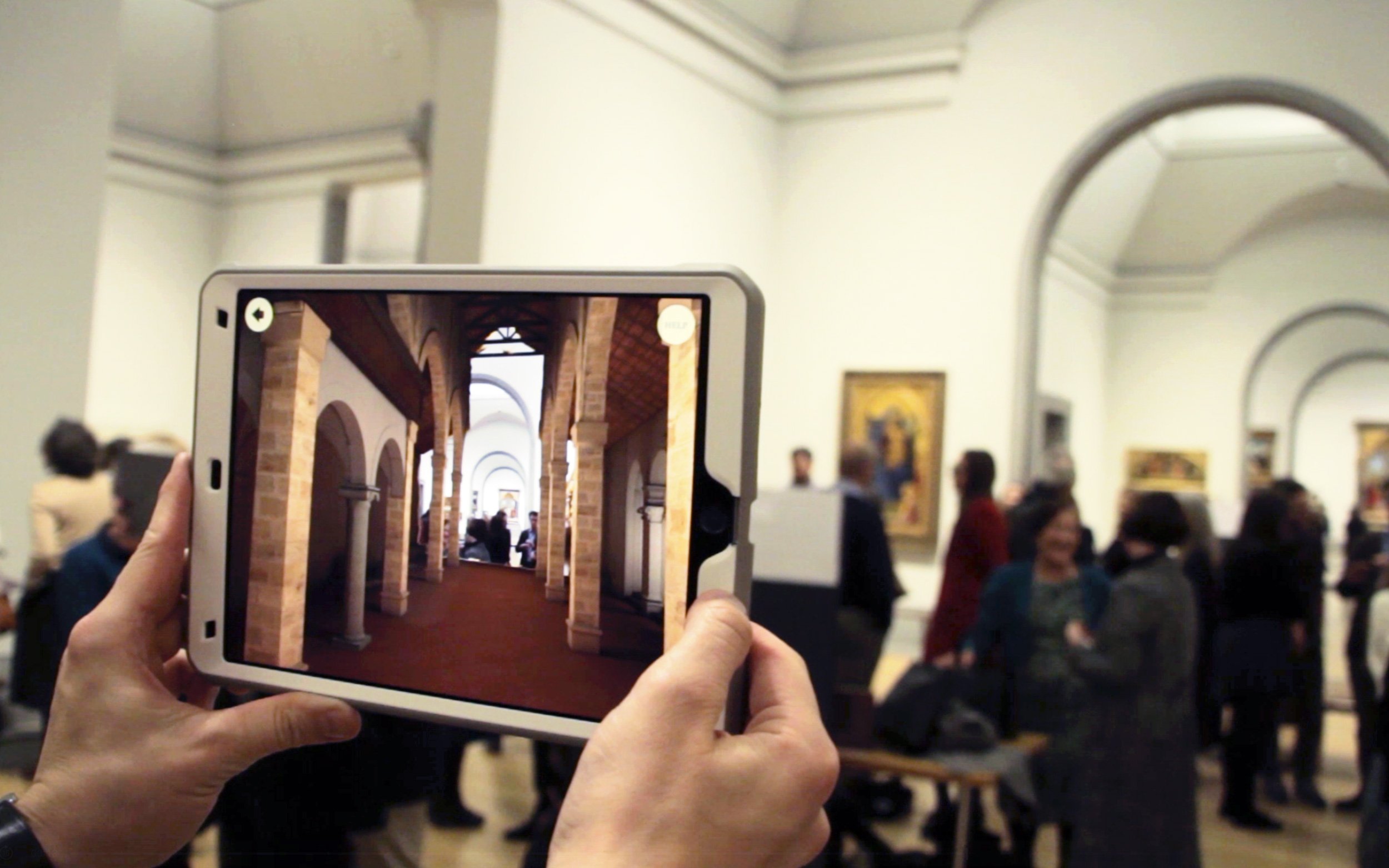We reveal the hidden layers
National Gallery: Hidden Florence 3D
In 2019 we rebuilt a 14th-century Florentine church for a National Gallery augmented reality app that contextualises artwork in London’s National Gallery and restores the San Pier Maggiore to the streets of Florence.
In 2022 we improved the app and added a second church, the Santa Maria degli Innocenti, opening four new locations to explore.
Using personal devices, users can now enjoy augmented reality art history by rebuilding and exploring a two lost, 3D rendered, historically-accurate, full scale augmented reality churches wherever they like!
Partners
Hidden Florence 3D is the result of a collaborative research project led by Fabrizio Nevola and Donal Cooper.
The app and project have been made possible with support from the Getty Foundation, through its Digital Art History initiative. Additional support was provided from the University of Exeter and the Arts and Humanities Research Council, UK.
The app was produced by Calvium, and 3D/AR development work was carried out by Zubr.
It’s been really exciting for me and my colleagues … to work on creating an app which can take people from 21st century London to 14th century Florence and to put this painting back into the lost space for which it was made 700 years ago.
Caroline Campbell, Director of Collections and Research, National Gallery London
Restoring the San Pier Maggiore as an augmented reality church
Fascinated with early Italian art and architecture, Fabrizio Nevola (University of Exeter) and Donal Cooper (University of Cambridge) conducted a collaborative research project – Immersive Renaissance – funded by the Getty Foundation.
One particular site of interest was the lost church of San Pier Maggiore. One of the most important churches in Florence, it was sadly demolished in the 18th century to make way for a covered market. All that remains today is a street of the same name.
The church artworks are now dispersed in collections around the world, including Jacopo di Cione’s altarpiece painted for the church’s high altar in 1371, now at the National Gallery in London. Though beautifully displayed in Room 60 of the Sainsbury Wing, Jacopo di Cione’s painted panels have lost their religious context. Today they’re a stunning artistic display, but they once played an important, more active, role in the ecclesiastical life of the city during ordination ceremonies.
Fabrizio and Donal wanted to restore and share San Pier Maggiore with present day visitors to the National Gallery, so they could appreciate the altarpiece in its full religious context. They also wanted locals and tourists in Florence to regain access to one of the oldest and most respected Florentine churches.
Zubr agreed to conduct an AR restoration and rebuild the San Pier Maggiore as an augmented reality art history experience.
Both academics are interested in using digital media as a bridge between 3D models and real-world augmented reality art history experiences, making Zubr the perfect team to recreate the lost church. With our partners at Calvium, we overhauled the 3D model the academics had created in 2015 to rebuild the San Pier Maggiore as an augmented reality church.
This included updating the structure with the most recent research, creating authentic textures and lighting conditions, and sculpting detailed 3D assets, including the altarpiece frame, columns and capitals. With such a detailed model and precise measurements, we knew we could accurately recreate the details and scale of the church as an augmented experience.
We built the National Gallery augmented reality app which is freely available to download to personal devices, giving users the power to rebuild the full scale church at will.
Approaching the altarpiece in the National Gallery and focussing the device’s camera on the artwork triggers a breath-taking animation where the augmented reality church rebuilds itself around you.
You can then walk around the interior of the church, exploring the space by moving your device to reveal other altars and intricate decorations.
At actual scale, San Pier Maggiore is far too big to fit within the National Gallery’s Room 60. From the altarpiece you have to walk across four rooms – the entire length of the Sainsbury Wing – in order to reach the front door of the church!
Furthermore, locals and tourists in Florence can stand on the original site of San Pier Maggiore and use the app to generate the augmented reality church around them. This reveals the previous life of the street and restores an exceptional historic site to the city, boosting footfall in a now overlooked area.
Using AR in Art History
By transporting 21st-century London viewers to 14th century Florence, the our National Gallery augmented reality church puts Jacopo di Cione’s beautiful artwork back into the lost space for which it was made 700 years ago and restores its religious context.
Both National Gallery augmented reality viewers and Florentine users are given a more authentic experience through the AR restoration of San Pier Maggiore.
As the anchor and trigger point that conjures the augmented reality church into existence, the contextual importance of the altarpiece is reinforced as it once again takes on a ritualistic purpose.
App users must focus on the artwork with their device, pausing to take in its beauty whilst the augmented reality church layer builds around them. The experience is one of quiet contemplation, rather than a disruptive gimmick or irreverent, modern reinvention of a Renaissance piece.
Although our National Gallery augmented reality app utilises cutting edge technology, the experience provides an intimate exploration of an historic building. The realism of the 3D rendered church is so immersive that you almost expect to hear your footsteps on the stone floor!
Witnessing the built environment the painting was created for enables visitors to better connect with the artwork, resulting in a unique augmented reality art history experience.
Whilst 14th century Florentines would be astounded by such modern technology, the National Gallery augmented reality app doesn’t detract or distract from the spiritual resonance of the artwork.
Instead Hidden Florence 3D creates an appropriate and authentic experience for an iconic masterpiece, restoring it to its original context and converting architectural research into an audience-focussed and international experience.
A New Year and a New AR Church
In early 2022 we updated the National Gallery augmented reality 3D model of San Pier Maggiore and added ‘hotspots’ with information about different architectural details visible in the AR church. This improved the scale-accuracy of the AR church model, allowing greater appreciation of its design particularly through enhanced lighting bakes.
We also added a second AR church – the Santa Maria degli Innocenti – which can be viewed in four ways, including at both its neighbour the Museo degli Innocenti in Florence and at the V&A in London.
The Santa Maria degli Innocenti was built in the years after 1420 to serve the city’s new foundling hospital designed by Filippo Brunelleschi. Within the app you see the church around the year 1500, after the hospital prior Francesco Tesori had renewed the three altars in the space with new paintings and frames.
Adding a second church into the app brings further awareness of the way many artworks have been dispersed across Europe and beyond. Many of the paintings commissioned for the Santa Maria degli Innocenti are on display next door to the remains of the original church, whilst a pair of kneeling angels believed to be from an Innocenti altar are now located in the V&A’s Medieval and Renaissance gallery.
In Florence, the original church site is locked so we created an AR doorway which you can match with the real church door. Tapping the door causes it to open and by scrolling with a finger you can propel your view into the centre of the building to take in the life-sized altars around the church.
In contrast, using the app at the V&A recreates the AR church at scale, filling the gallery almost perfectly. This ironically makes the in-gallery AR experience feel incredibly realistic, as you can wander amongst the real-world artefacts whilst seeing them in their original context.
While the gallery is bright and white, the AR church within the app is full of colour and texture. Reuniting these objects with their original, full scale locations gives vital context to viewers in Florence and those in front of the artefacts, and prompt further discussion of the power of AR to connect objects, people and places.
Find out more about the project In the Hidden Florence website or get in touch to discuss your own AR restoration project.





